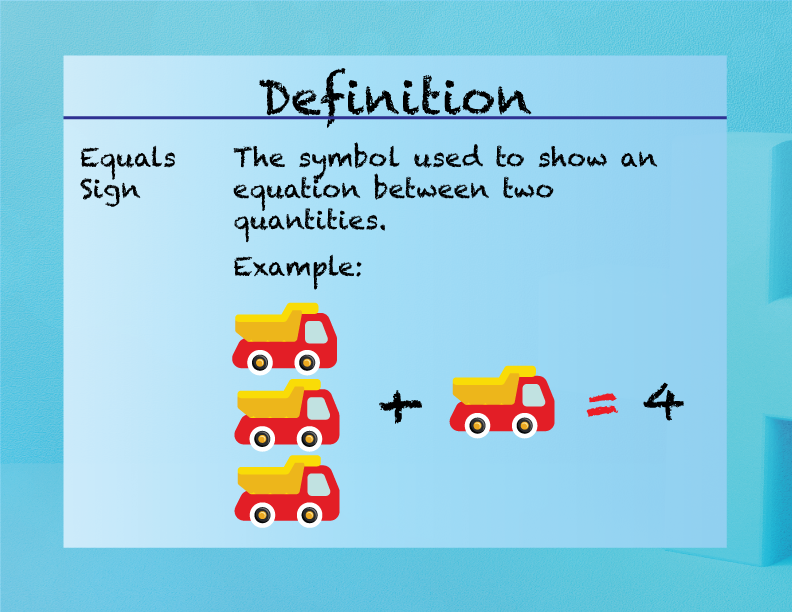
Display Title
Elementary Math Definitions--Addition Subtraction Concepts--Equals Sign
Display Title
Equals Sign

Topic
Addition and Subtraction
Definition
The equals sign is a symbol used to show that two expressions have the same value.
Description
The equals sign is a fundamental symbol in mathematics, used to show that two expressions have the same value. For example, in the equation
3 + 4 = 7
the equals sign indicates that the sum of 3 and 4 is equal to 7. This symbol is essential for understanding mathematical relationships and solving equations.
In mathematics, the equals sign is represented by two parallel horizontal lines (=). It is used in various mathematical operations, including addition, subtraction, multiplication, and division. Understanding the equals sign helps students develop problem-solving skills and logical thinking, preparing them for more advanced mathematical concepts such as algebra and calculus.
In real-world applications, the equals sign is used in various scenarios, such as calculating the total cost of items, determining the total distance traveled, and more. For example, if you have 3 apples and add 4 more, the equals sign helps you understand that you now have 7 apples.
Teacher's Script: "Today, we will learn about the equals sign. The equals sign tells us that what is on one side of it is the same as what is on the other side. For example, if we have 3 candies and add 4 more, the equals sign shows that we have 7 candies in total. Let's practice using the equals sign with some examples."
For a complete collection of terms related to Addition and Subtraction click on this link: Addition and Subtraction Collection
| Common Core Standards | CCSS.MATH.CONTENT.1.OA.B.3, CCSS.MATH.CONTENT.2.NBT.B.9 |
|---|---|
| Grade Range | 1 - 3 |
| Curriculum Nodes |
Arithmetic • Addition • Addition Expressions and Equations |
| Copyright Year | 2021 |
| Keywords | addition, subtraction, equation, place value |